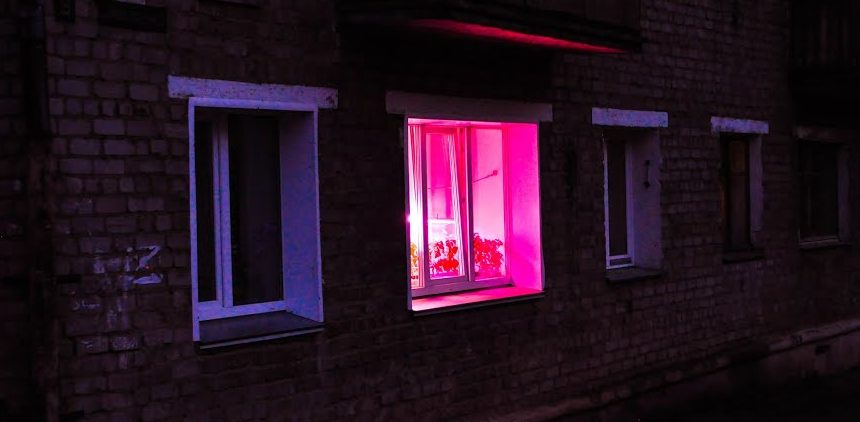Where does the pink light come from in the windows
Passing by the houses at night, you can notice that in some windows the light is pink and sometimes purple. Many people think that this is neon lighting installed for beauty, but this is not always the case. Some even take pictures and try to find an explanation on social networks and forums.
Strange theories have been put forward, such as that this is how apartments that no one lives in are illuminated. Of course, this is not true. Phytolamps emit this light. They compensate for the lack of solar ultraviolet light, which plants need for proper development and growth.
What does pink or purple light mean in windows
If you see pink light in one of the windows at night, it means that there are plants on the window sill, which during the day is not enough UV light. Before the advent of phytolamps, colored lights were used for this purpose. But they are not as effective as modern devices. With their help, not only flowers, but also seedlings can be grown on the windowsill.
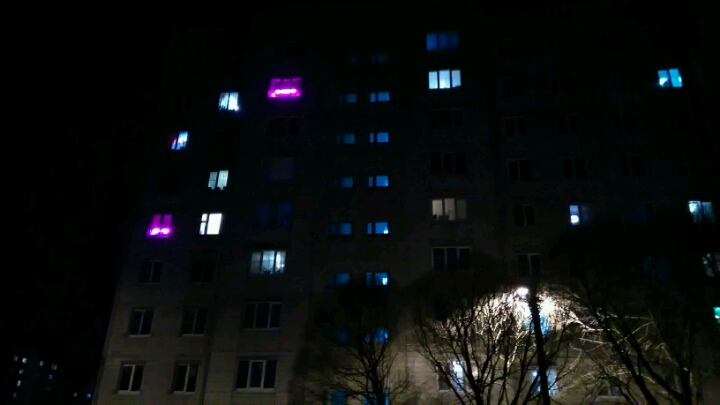
Previously, special powerful incandescent lamps were installed for this purpose. As a result, we had to pay high energy bills and sleep under bright lights all night. Plants were also badly affected by such appliances. If the leaves were delicate, they would get burns on them.
What is it for
In order for plants to develop fully and get enough micronutrients, they need the main source of light - sunlight. If there is not enough light, the solution is to install a phytolamp with pink light. Additional lighting will help the seeds to germinate, strengthen the root system and grow green mass.
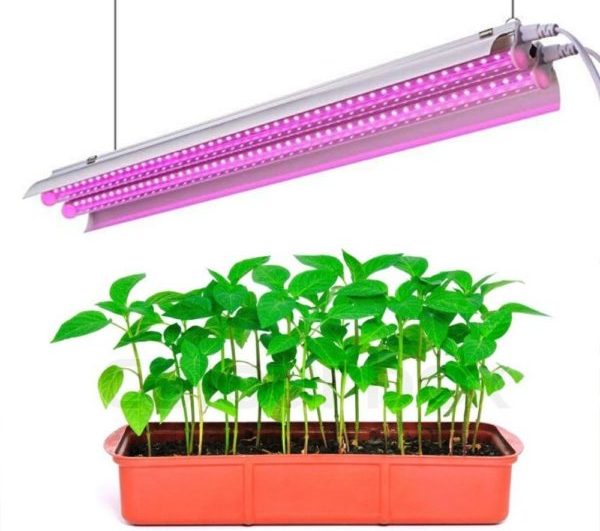
For example, if the seeds are small, they should not be planted too deep. Under natural conditions, enough UV light passes through a thin layer of soil to stimulate their proper germination. If you place pots with seeds under the lights, this will be enough to stimulate the full development of the root system. In addition, the seedlings will be immune to a number of possible diseases.
With LED phytolamps you can not only improve conditions for germination, but also achieve an early harvest. The red glow is between 600 and 700 nm. This is sufficient for:
- Early fruit ripening.
- The rapid emergence of large inflorescences.
- Good germination and root development.
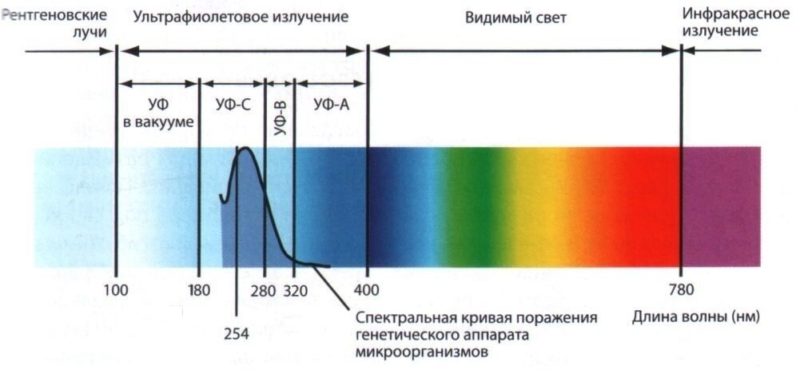
It is important to know that the lamp that emits light in the spectrum of 400-500 nm is suitable for those plants that need to grow green mass.
Growing plants
LED lights are made from blue and red crystals. They are best suited to replace natural ultraviolet light to illuminate plants.
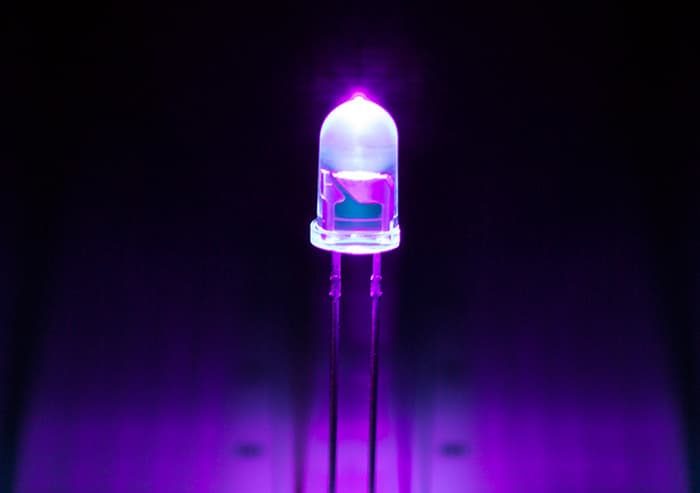
Phytolamps are used when the windows of the apartment face north. Since many indoor plants like bright sunlight, you have to install additional lighting, especially if we are talking about exotic flowers or fruits.
If you can see a purple glow in the window, close to blue, it could be a phytolamp for an aquarium where algae are grown. Modern models of lights are made in aluminum housings, which are not susceptible to moisture. They also do not harm other aquarium inhabitants by stimulating algae growth.
Dwelling illumination.
It is likely that the pink lighting is just a neon, which is installed under the ledge to create a cozy atmosphere and as an element of the design of the apartment. Often it is LED-lighting. It is installed over curtains or in a suspended ceiling. It can be in any of the rooms, regardless of whether it is a kitchen or bedroom.
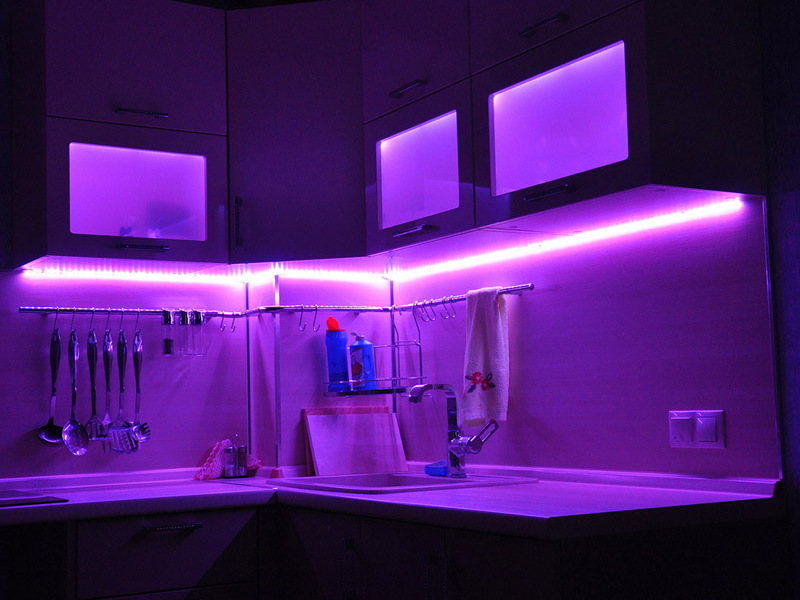
In any case, it's hard to tell just by looking at it when you're outdoors. A phytolamp can only be recognized if it is mounted directly above a window sill and shines down on the plants.
What to pay attention to when choosing
To use a phytolamp, you need to understand the principle of its operation, varieties and purposes of use, as well as have experience in growing flowers or seedlings. When choosing a lamp you should pay attention to:
- range of radiation. Experienced gardeners do not advise to buy lamps with green or yellow light, they are useless and will not help grow seedlings. The most effective colors are blue and red. They can be combined, but it is better to use more red;
- warranty. Such devices are designed for long-term operation. If the manufacturer has not given a guarantee for a year or more, you should not trust him. Gardeners recommend choosing lights with a warranty period of 2 years or more;
- the area of action. Here it is worth leaning on the number of plants requiring artificial lighting. The more there are, the more lamps you will have to buy. Sometimes it makes more sense to buy a large lighting panel;
- wavelength. The manufacturer specifies the parameters on the packaging of the luminaires. For blue, the recommended values are 440-460 nm, for red 640-660 nm.
Once the lamp is selected, you should take care of the correct installation, because otherwise the leaves of the plants can get burns. Devices should be installed at a safe distance from seedlings or flowers, about 30-45 centimeters. Once installed, you should put your hand under the lamp at the same level as the plants. If you feel a burning sensation, the lamp should be raised higher.
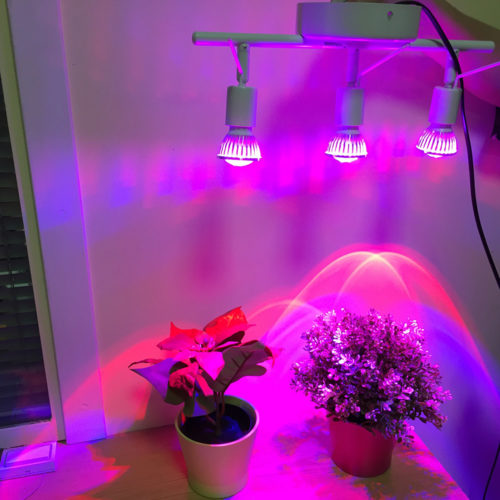
Installation of phytolamps can hardly be called a process requiring a lot of experience. Often the devices are sold with tripods, brackets and stands. Some models include holders in the form of clothespins. They can easily be mounted on the edges of crates or containers.
How to choose such a light
The spectrum of light radiation is particularly important for plant growth. For photosynthesis, values between 450 and 650 nm are considered most acceptable. If you compare the energy efficiency of a full spectrum phytolamp and a bicolored one, the former loses, but because of the breadth of the spectrum it gives plants more light similar to the sun. This light features peaks in areas of photosynthesis, which allows you to capture adjacent areas of the spectrum.
Multispectrum lamps are better suited for adult plants. The light emitted stimulates fruiting and flowering in most crops through the intensity of red and blue light. Multispectrum is used to grow plants that severely lack natural sunlight. Often these are large floras with a dense green mass.
A test of the six spectrum phytolamps on flowering. The perfect bulb for peppers!
Conclusion
The only explanation for the purple or pink glow in the windows is growing plants or having backlighting as a design element. The rest of the options are nothing more than a wild fantasy. But sometimes this light hides illegal activities of citizens: ultraviolet light is necessary to grow illegal varieties of marijuana.
